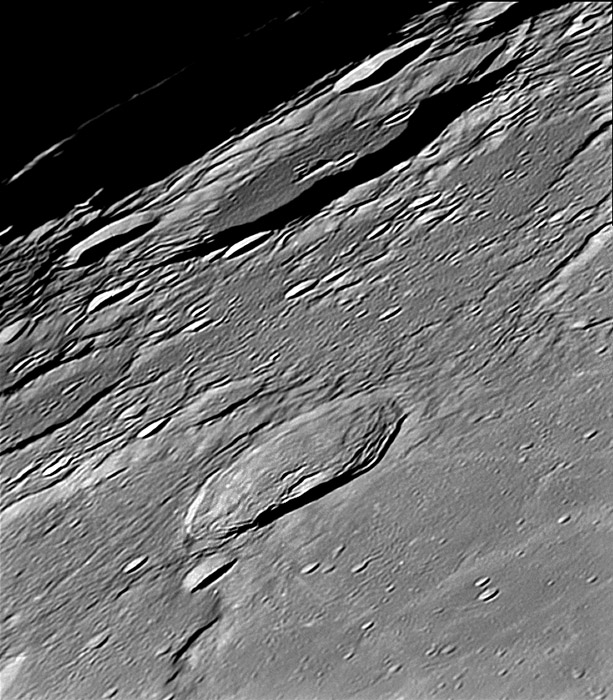Difference between revisions of "July 5, 2010"
| Line 1: | Line 1: | ||
__NOTOC__ | __NOTOC__ | ||
=Challenging Pascal= | =Challenging Pascal= | ||
| − | |||
<!-- ws:start:WikiTextHeadingRule:1:<h1> --> | <!-- ws:start:WikiTextHeadingRule:1:<h1> --> | ||
<!-- ws:start:WikiTextLocalImageRule:16:<img src="/file/view/LPOD-July5-10.jpg/151529367/LPOD-July5-10.jpg" alt="" title="" /> -->[[File:LPOD-July5-10.jpg|LPOD-July5-10.jpg]]<!-- ws:end:WikiTextLocalImageRule:16 --><br /> | <!-- ws:start:WikiTextLocalImageRule:16:<img src="/file/view/LPOD-July5-10.jpg/151529367/LPOD-July5-10.jpg" alt="" title="" /> -->[[File:LPOD-July5-10.jpg|LPOD-July5-10.jpg]]<!-- ws:end:WikiTextLocalImageRule:16 --><br /> | ||
| − | <em>image by [mailto:dpeach_78@yahoo.co.uk Damian Peach], Barbados, W.I.</em><br /> | + | <em>image by [mailto:dpeach_78@yahoo.co.uk" rel="nofollow Damian Peach], Barbados, W.I.</em><br /> |
<br /> | <br /> | ||
The crater Pascal is only at 75°N, 70°W but seems less often imaged than [http://the-moon.wikispaces.com/Drygalski Drygalski], a similar crater near the opposite pole that is even closer to the limb. I think this neglect is endemic to the entire north polar region, and especially along the limb both east and west of the pole. You might think there are never good librations of these regions, but once again Damian captures the rarely seen. Pascal is 115 km wide and may be as deep as 4.6 km. Its wall terraces are largely gone, and an 800 m high ridge serves as a central peak. The relatively flat floor was probably originally coated with impact melt, but that has probably long since been covered by debris that slid down the walls and ejecta from the formation of the Imbrium Basin. The younger Carpenter is a relatively standard complex crater with the peculiarity of two central mountains.<br /> | The crater Pascal is only at 75°N, 70°W but seems less often imaged than [http://the-moon.wikispaces.com/Drygalski Drygalski], a similar crater near the opposite pole that is even closer to the limb. I think this neglect is endemic to the entire north polar region, and especially along the limb both east and west of the pole. You might think there are never good librations of these regions, but once again Damian captures the rarely seen. Pascal is 115 km wide and may be as deep as 4.6 km. Its wall terraces are largely gone, and an 800 m high ridge serves as a central peak. The relatively flat floor was probably originally coated with impact melt, but that has probably long since been covered by debris that slid down the walls and ejecta from the formation of the Imbrium Basin. The younger Carpenter is a relatively standard complex crater with the peculiarity of two central mountains.<br /> | ||
<br /> | <br /> | ||
| − | <em>[mailto:tychocrater@yahoo.com Chuck Wood]</em><br /> | + | <em>[mailto:tychocrater@yahoo.com" rel="nofollow Chuck Wood]</em><br /> |
<br /> | <br /> | ||
<strong>Technical Details</strong><br /> | <strong>Technical Details</strong><br /> | ||
| Line 15: | Line 14: | ||
<strong>Related Links</strong><br /> | <strong>Related Links</strong><br /> | ||
Rükl plate [http://the-moon.wikispaces.com/R%C3%BCkl+3 3]<br /> | Rükl plate [http://the-moon.wikispaces.com/R%C3%BCkl+3 3]<br /> | ||
| − | Damian's lunar [http://www.damianpeach.com/lunar0709.htm images]<br /> | + | Damian's lunar [http://www.damianpeach.com/lunar0709.htm" rel="nofollow images]<br /> |
| − | Looking [http://www.lpod.org/index.php?s=pascal beyond] Pascal<br /> | + | Looking [http://www.lpod.org/index.php?s=pascal" rel="nofollow beyond] Pascal<br /> |
<br /> | <br /> | ||
<hr /> | <hr /> | ||
| − | <div>You can support LPOD when you buy any book from Amazon thru [http://www.lpod.org/?page_id=591 LPOD!]<br /> | + | <div>You can support LPOD when you buy any book from Amazon thru [http://www.lpod.org/?page_id=591" rel="nofollow LPOD!]<br /> |
</div> | </div> | ||
| − | |||
---- | ---- | ||
===COMMENTS?=== | ===COMMENTS?=== | ||
Click on this icon [[image:PostIcon.jpg]] at the upper right to post a comment. | Click on this icon [[image:PostIcon.jpg]] at the upper right to post a comment. | ||
Revision as of 22:03, 4 January 2015
Challenging Pascal

image by " rel="nofollow Damian Peach, Barbados, W.I.
The crater Pascal is only at 75°N, 70°W but seems less often imaged than Drygalski, a similar crater near the opposite pole that is even closer to the limb. I think this neglect is endemic to the entire north polar region, and especially along the limb both east and west of the pole. You might think there are never good librations of these regions, but once again Damian captures the rarely seen. Pascal is 115 km wide and may be as deep as 4.6 km. Its wall terraces are largely gone, and an 800 m high ridge serves as a central peak. The relatively flat floor was probably originally coated with impact melt, but that has probably long since been covered by debris that slid down the walls and ejecta from the formation of the Imbrium Basin. The younger Carpenter is a relatively standard complex crater with the peculiarity of two central mountains.
" rel="nofollow Chuck Wood
Technical Details
May 31st, 2007. C14 with SKYnyx 2.0M.
Related Links
Rükl plate 3
Damian's lunar " rel="nofollow images
Looking " rel="nofollow beyond Pascal
COMMENTS?
Click on this icon File:PostIcon.jpg at the upper right to post a comment.



